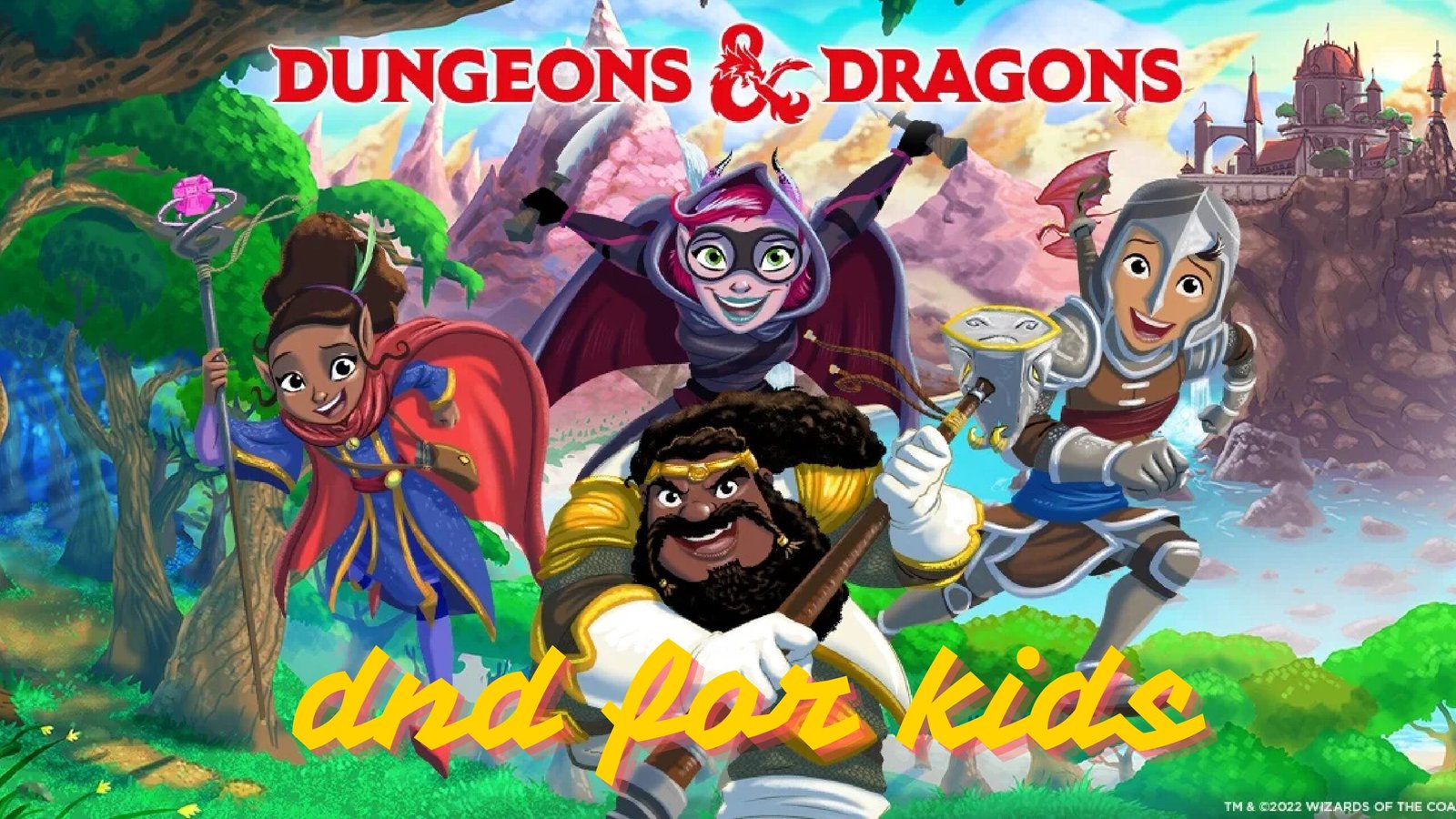Introduction to Dungeons & Dragons
dnd for kids is a tabletop role-playing game (RPG) that has captivated the imaginations of players of all ages for decades. While it’s often seen as a game for teenagers and adults, D&D is also an excellent activity for kids. It fosters creativity, problem-solving, and teamwork in a fun and engaging way.
Why D&D is Great for Kids
1. Encourages Creativity:
dnd for kids allows kids to create their own characters, invent stories, and explore fantastical worlds. This encourages them to use their imagination and think creatively.
2. Develops Problem-Solving Skills:
The game involves various challenges and puzzles that players must solve. This helps kids develop critical thinking and problem-solving skills.
3. Promotes Teamwork:
D&D is a collaborative game where players must work together to overcome obstacles. This fosters a sense of teamwork and cooperation among kids.
4. Improves Communication:
Kids learn to communicate effectively as they describe their actions, discuss strategies, and interact with other characters in the game.
Getting Started with D&D for Kids
1. Simplify the Rules:
While D&D can have complex rules, there are simplified versions and resources available that make it easier for kids to understand and play. The D&D Starter Set is a great option for beginners.
2. Create Kid-Friendly Adventures:
Design adventures that are appropriate for the age group you’re playing with. Focus on fun and exciting scenarios rather than complex or dark themes.
3. Encourage Role-Playing:
Encourage kids to get into character and role-play their actions. This not only makes the game more enjoyable but also helps them develop empathy and social skills.
4. Be Patient and Flexible:
Be prepared to explain rules multiple times and be flexible with them. The goal is to have fun, so it’s okay to bend the rules a bit to keep the game moving and enjoyable.
Tips for Running a Kid-Friendly D&D Game
1. Keep Sessions Short:
Younger kids may have shorter attention spans, so keep game sessions short and engaging. One to two hours is usually a good length.
2. Use Visual Aids:
Maps, miniatures, and illustrations can help kids visualize the game world and stay engaged. There are many resources online where you can find or create these aids.
3. Focus on Fun:
Remember that the primary goal is for everyone to have fun. Don’t get too caught up in the rules. If something isn’t working or the kids aren’t enjoying it, change it up.
4. Involve Everyone:
Make sure every child has a chance to participate and contribute to the game. This ensures that everyone feels included and has a good time.
Conclusion
Dungeons & Dragons can be a wonderful activity for kids, providing countless hours of entertainment while helping them develop important life skills. By simplifying the rules, creating kid-friendly adventures, and focusing on fun and engagement, you can introduce the magic of D&D to a younger audience. So gather some dice, create some characters, and embark on an unforgettable adventure with your kids!

